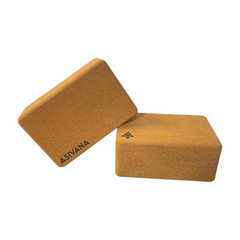Citta (Memory/Consciousness)
Jack UtermoehlShare
Citta is a Sanskrit term referring to the mental field that holds impressions, memories, and the potential for consciousness itself.
It acts as the storehouse of all past experiences—known as samskaras—and influences how we perceive, react, and behave in the present.
In yogic philosophy, citta is not simply "mind" in the thinking sense, but the subtle substratum of the psyche—like a still lake that reflects the light of the soul when undisturbed.
Etymology and Meaning
Sanskrit Spelling: चित्त
Root Word: "Cit" (to perceive, to be conscious)
Translation Variations: Mind-stuff, memory field, subconscious mind, awareness base
Pronunciation: Citta [CHIT-tah]
Citta includes both conscious thought and unconscious patterns. It is the canvas upon which experiences leave impressions and the lens through which perception arises.
Citta in Yogic and Spiritual Philosophy
In Yoga: Patanjali defines yoga as the stilling of the fluctuations of citta (yogaḥ citta-vṛtti-nirodhaḥ)—indicating that liberation begins with quieting the mental field.
In Samkhya: Citta is part of the antahkarana (inner instrument), working alongside manas (sensory mind), buddhi (intellect), and ahamkara (ego).
In Practice: Meditation, mantra, and mindful living help clarify citta so that it reflects the light of the Self clearly and without distortion.
When citta is disturbed—like muddy or rippling water—it distorts reality. When calm and clear, it becomes a transparent medium through which the soul is revealed.
Symbolism and Elements
Symbol: A still lake or clear lens—undistorted, reflective, deep
Element: Water and space—fluid, subtle, and capable of storing impressions
Chakra: Often associated with the third eye (ajna) and crown (sahasrara), where stillness gives rise to higher awareness
Mantra: Om Shanti Shanti Shanti—invoking peace across all layers of being, including the mental field
Yoga Essentials for Your Practice
Support your yoga journey with high-quality, sustainable props designed for comfort and stability.

Crafted from eco-friendly cork for durability and a comfortable practice.
$24
Shop Now
Includes everything you need to get started: a mat, blocks, and a yoga strap.
$120
Shop NowPractical Application
In Yoga Practice
- Use meditation to still the vrttis (mental movements) and observe what arises without reaction
- Practice consistent abhyasa (practice) and vairagya (non-attachment) to purify the contents of citta
- Engage in self-inquiry to reveal deep-rooted samskaras and release limiting patterns
In Daily Life
- Observe the stories and memories that replay in your mind—how they shape identity and mood
- Journal as a means to bring unconscious impressions into conscious light
- Engage in practices like forgiveness and gratitude to reshape the inner imprint landscape
Quotes and Wisdom
"The mind is like a lake. If its surface is disturbed, you cannot see the depth. When still, the soul is reflected clearly."
"Impressions held in citta shape our reality—purify the field, and clarity returns."
Modern Relevance
In a time of constant mental activity and overstimulation, citta often becomes clouded with restlessness, anxiety, and distraction.
Yoga offers tools to slow down, still the mind, and begin to clean the internal field.
A clear citta doesn’t just lead to calm—it allows us to remember who we truly are beneath all the noise.
Related Concepts
Vṛtti: The fluctuations or waves of activity within citta
Samskara: Subtle impressions left by thoughts, actions, and experiences
Dhyana: Meditation—the practice that reveals and quiets the contents of citta
How to Work with Citta
Mindset: Treat the mind like a sacred space—tend to it with care
Actions: Limit mental clutter, meditate regularly, and practice contentment
Reflection: Ask, “What impressions am I holding—and are they helping me see clearly?”
Suggested Reading
- The Yoga Sutras of Patanjali
- The Radiance Sutras by Lorin Roche
- The Untethered Soul by Michael A. Singer
Conclusion
Citta, the storehouse of memory and consciousness, is both a mirror and a filter. When agitated, it distorts truth; when still, it reflects the soul.
Through steady practice and inner reflection, we can purify citta and see life—and ourselves—with clarity and depth.






